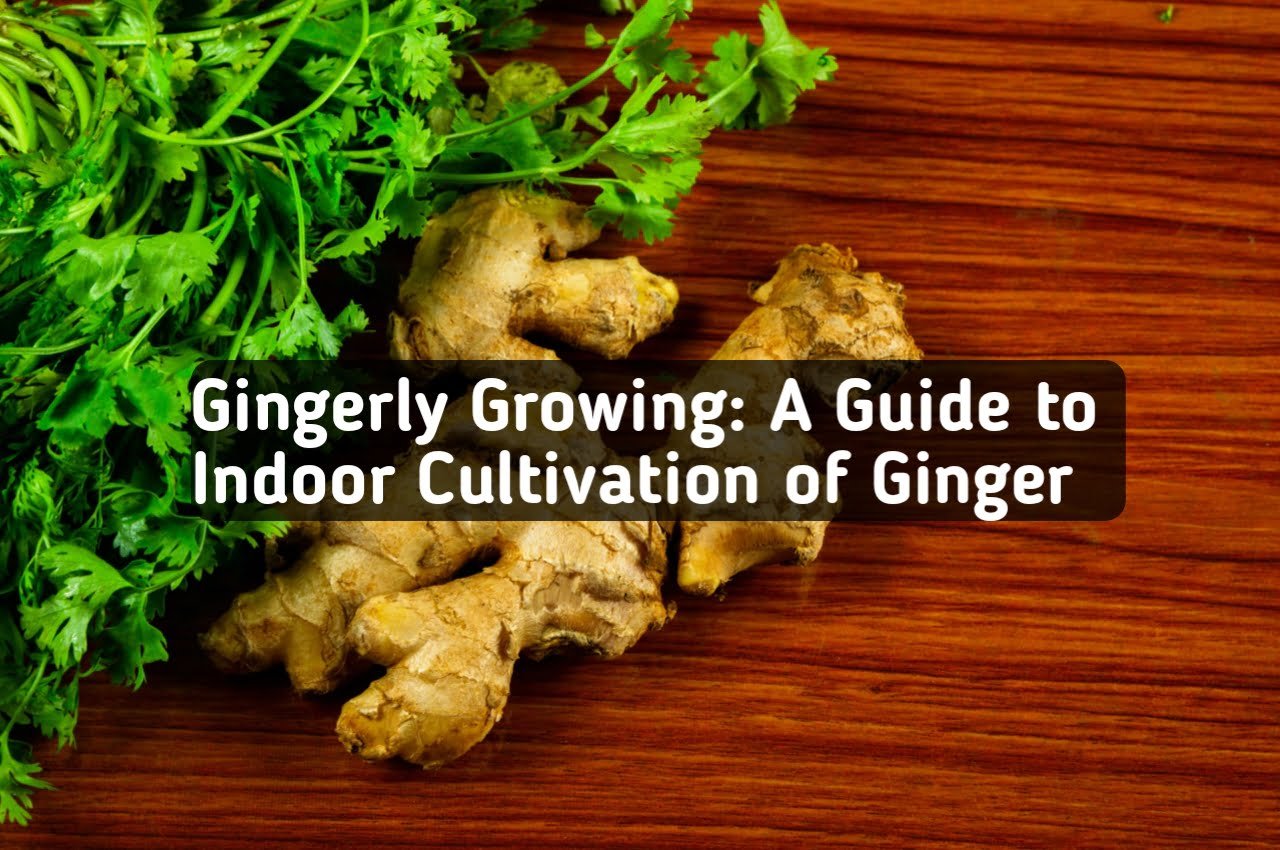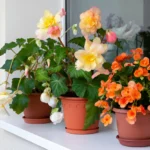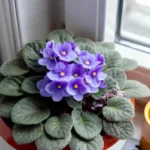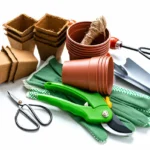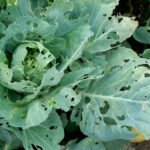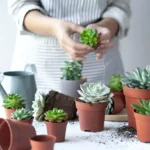Table of Contents
Add a header to begin generating the table of contents
Ginger is an essential herb in our kitchen. It is used for a variety of purposes, from cooking to medicinal properties. You’d be surprised that you can grow ginger in tubs or grow bags at home, and these methods are surprisingly simple.
Let’s learn how to grow ginger simply in a tub or bag at home.
Ginger Biography
Ginger, which belongs to the genus Zingiber, is scientifically known as Zingiber officinale. It is very popular as a tropical plant of the Asian continent. In Sri Lanka and India, it is widely grown. Ginger is accustomed to tropical and dry climates and does not like rain and snow.
From their rhizomes, roots, along with shoots, emerge first. Inside, the rhizome is light yellow. The skin of the rhizomes is very thick and smooth, and the inside is very juicy and dense. The leaves of the ginger plant look like the leaves of the bamboo plant and are a foot or so tall. Ginger is perennial, and its leaves and stems die back every year.
Ginger contains essential vitamins C and B6. It has 80 kcal and 79% water.
Rhizome
The part of ginger we are most familiar with is the rhizome. The rhizome is the central part of the ginger, which contains the eyes. Their skin is thick and smooth. Eyes are the first stage of germination. Seedlings can be grown from rhizomes.
Ginger Benefits
Although we use it in cooking, ginger has many beneficial aspects. We can use ginger in pitch, powder, paste, and liquid form. It plays a significant role in human health and boosts our immune system.
Ginger increases metabolism and reduces inflammation. Gastric and abdominal bloating problems are resolved. Studies have shown you can eat 3-4 grams of ginger daily. When ginger is consumed with tea, it adds several times more flavor, aroma, and nutrients.
Ginger prevents nausea and vomiting in pregnant women. Although nothing can be said, our research has shown that ginger is essential in reducing weight and fat. It heals body ailments, headaches, and body infirmities and prevents us from getting various infections.
Behind the popularity of ginger is its wealth of properties.
Ginger Grows Indoors
Ginger comes from Asia. The climate of the Asian continent is mostly tropical. We can easily cultivate it by controlling the temperature in the house and greenhouse. You can also keep it inside sheds in your yard, but make sure it needs direct sunlight.
If you plant in a tub, you can place it in a south-facing window to get enough light. You need to use grow lights if you don’t get enough light. But yes, you can plant ginger in the house and shed.
And if the house has a large backyard, there is no question.
Care & Tips
Rhizome Selection
Select fresh, juicy, and eye-catching rhizomes to grow ginger at home. You can get ginger from the grocery store or supermarket or collect fresh, ripe, organic ginger from a ginger grower you know.
The more eyes the rhizome has, the more small pieces we can cut and the more seedlings we will have. Dry old ginger cannot be selected. Check the eyes on the rhizomes. If you have more eyes, harvest them to propagate a large ginger with multiple rhizomes. Cut each large ginger plant into 2 to 2.5-inch pieces and remove the eyes (it should have 2 to 3 eyes).
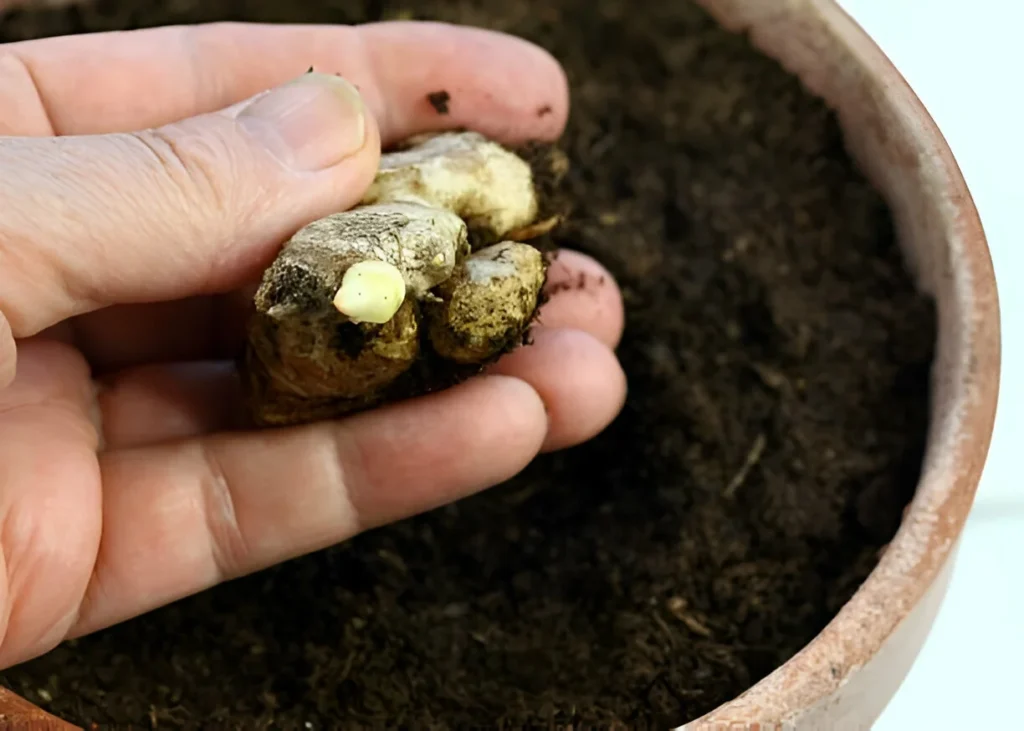
Water Treatment Process
We got the rhizome; now we will clean it with water. Before germinating the seedlings, we will soak the rhizomes in water. Dip the rhizomes with enough water in a small box or bowl with a lid. We have to wash our rhizomes for at least 24 hours.
Please keep it in such a place that it is dry and has enough light. When cleaned, we will get fresh rhizomes to help the roots and seedlings grow.
Planter Selection
Tubs or grow bags are very effective for growing ginger indoors. Now, we need to select the planter or growing bag. Ginger rhizomes grow horizontally. We should choose something other than full tubs or bags with greater depth.
Choosing tubs or bags 10-14 inches wide and 8-10 inches deep is also acceptable for ginger. Each rhizome should be spaced at least 4 inches apart. If you grow ginger in beds, spread the rhizomes 3-4 inches apart in a bed.
Soil
Early spring is the ideal time of year to grow ginger. March to May is the perfect time to sow them. For germination, you need to prepare the soil by mixing coco peat and compost. Adding perlite to this mix is optional.
You can use seedling trays for planting seedlings. We put the soil mix in the seedling tray and bury each rhizome one inch deep so that roots and shoots can easily emerge from the eyes. After that, I will spread a little mixture of cocopeat and fertilizer and give enough water with a water can so that the whole soil can get wet. Now we have to take the seedling tray and place it in a place where it is 80-85°F and 25-30°C.
Within a week, you will see the shoots grow to about 1-1.5 inches, and the stalks will grow quite large in that time. You will transfer these seedlings to permanent pots within 2-3 weeks. On permanent footing, they will last until harvest.
Permanent Medium
We prepare the soil for the ginger plant. I use the following materials for soil preparation: potting soil, cocopeat, sand, and vermicompost (you can use any organic compost). You can also add perlite or vermiculite, which can retain moisture in the plant’s roots.
Light
Ginger plants require a lot of light. They require six hours or more of direct sunlight. Even more than this, there will be no damage to the plant.
Temperature
If you plant this tropical plant in the backyard, it will grow well at 70°F and develop leaves and branches.
Humidity
As the trees are from tropical regions, they are heat tolerant and bring them to the shed or house during the rainy season. It is best to keep it under a large tree during the rainy season so it does not get too much water.
Water
Regardless of the plants’ placement, place a drainage layer under your tub or grow bag to drain water quickly. Use well-draining soil to avoid waterlogging. If the soil is dry, check the soil with your hands and then water. Only a little water is required during the monsoon. Overwatering can cause their rhizomes to rot.
Fertilizer
You can mix fertilizer with the soil while planting. After that, you can feed the plant for 2 to 2.5 months, and finally, before harvest, you can apply fertilizer once before 15 to 20 days.
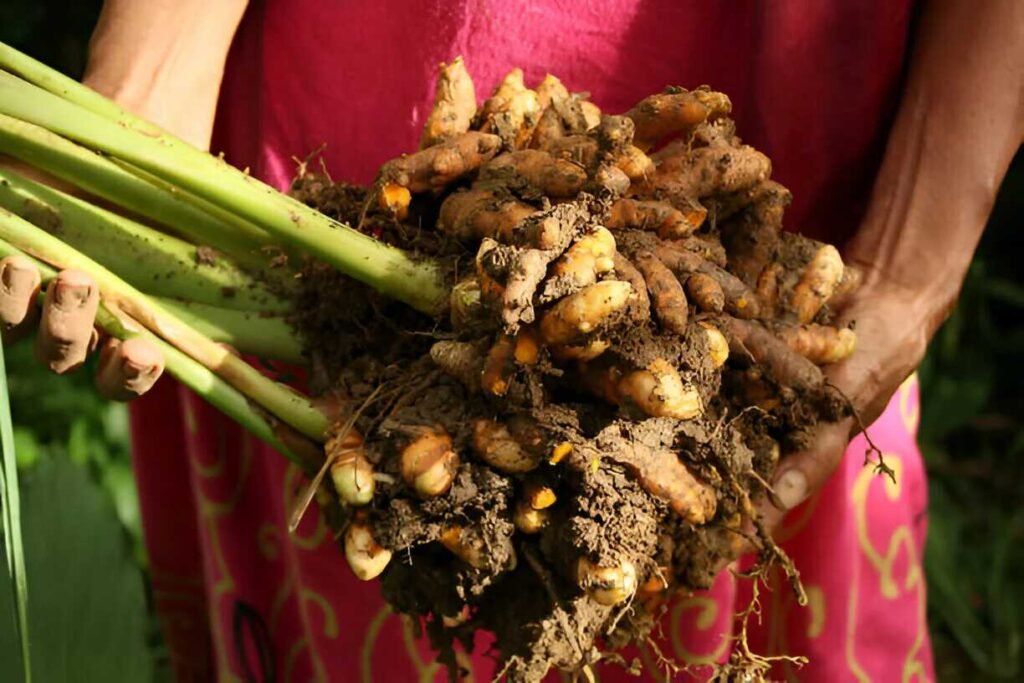
Harvesting Time
You can understand when you see the branches and leaves of your plant that the rhizome has become mature. That is the perfect time for harvest. The leaves and branches will dry up and turn yellow, and some will die. You can harvest in 7-8 months after planting. Get plump fresh ginger that is ten times fresher and fuller than your grocery store. Also, if you want, you can harvest immature baby rhizomes in 3-3.5 months, less in quantity than mature rhizomes but more tasty than mature ones. (But wait if you want to store more ginger)
FAQ
1. Can the leaves of the ginger plant be eaten?
= Yes, the leaves of the ginger plant can be eaten; they are fragrant. You can use them in tea and salad.
2. Does ginger regrow every year?
= Since ginger is a perennial, it will live as its branches die each year; you can harvest and replant ginger.
3. Do you have to kill the whole plant to harvest the root?
= No, harvest it partially and stick the rest back into the soil.
4. How do you grow ginger roots indoors?
= If you want to grow ginger root at home, the first thing you need to do is select an ideal-eyed ginger and cut off all the eyes on the ginger along with the eyes. Now, take a container box and make sure it has a lid. Now, wet some of the tissue paper in the container box with a small amount. Now, place the gingers you cut with your eyes on the .moist tissues earlier. Then, if you want, you can cover it with one or two wet tissues. Now, attach the face of the container box. Roots will appear within five days.
5. When is the best time to plant ginger?
= Late winter or early spring, for cooler climate when the danger of frost has passed.
